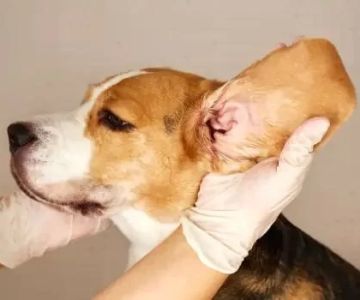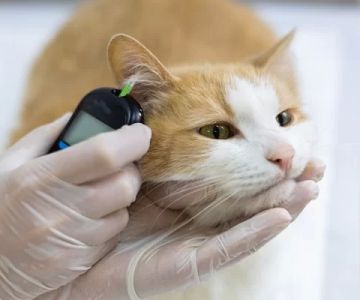Training Your Dog to Stop Jumping on People: A Step-by-Step Guide
As a dog owner, one of the most common issues we face is our dogs jumping on people. Whether it's a greeting at the door or simply getting overly excited, this behavior can be frustrating for both the dog and the people involved. I know firsthand how this can be both embarrassing and challenging. But the good news is, training your dog to stop jumping is entirely possible, and with a little patience and consistency, you can teach your dog better ways to express excitement. Here’s a detailed guide based on my experience and the techniques I’ve used with my own dog.
1. Understanding Why Dogs Jump on People
Before diving into the training process, it’s important to understand why dogs jump in the first place. In many cases, dogs jump because they are excited, seeking attention, or simply trying to greet you in the way they know best. For puppies, this behavior may also be a sign of curiosity or a need to explore their surroundings. Dogs often use jumping as a way to get close to their humans, particularly when they're seeking affection or trying to communicate their feelings. In short, dogs often jump because they’re social animals who want to connect with us. However, while this behavior might be natural, it’s not always ideal in social situations.
2. The Importance of Consistency in Training
Consistency is key when it comes to training any dog, and this is particularly true for teaching them to stop jumping. I’ve learned this lesson the hard way, as I initially allowed my dog to jump on me when I came home, thinking it was cute. However, this created confusion for my dog, as he didn’t understand why he could jump on me but not on guests or strangers. To make sure your dog learns, everyone in your household must be on the same page when it comes to reinforcing the "no jumping" rule.
One of the most effective methods I used involved turning my back on my dog every time he jumped. Initially, he was confused—he didn’t understand why he wasn’t getting attention. But after a few days, he began to catch on that jumping didn’t lead to the affection he was seeking. In fact, he quickly realized that sitting calmly and waiting for attention was a much better choice. It took time and patience, but the results were worth it.
3. Positive Reinforcement: Rewarding Good Behavior
Positive reinforcement is one of the best ways to encourage good behavior in dogs. After my dog stopped jumping on me, I began to reward him when he remained calm and kept his paws on the floor. I would praise him, offer a treat, or give him a toy to show him that calm behavior was what I wanted. This reinforcement helped solidify the lesson and created a positive association with the behavior I was encouraging. Remember, dogs love praise and treats, so it’s a great motivator.
4. Teaching Your Dog a New Greeting Behavior
Another method I found effective was teaching my dog an alternative behavior to replace jumping. For example, I taught him to sit when greeting people. Whenever someone came over, I would give the “sit” command before allowing him to approach. At first, he was a little slow to respond, but with consistent practice, he began sitting automatically when he saw someone approaching. This new behavior not only stopped the jumping, but it also made greetings much calmer and more enjoyable for everyone involved.
If you’re wondering how to get started with this, here’s a simple exercise that worked for me:
- Start with your dog on a leash so you have control.
- When a person approaches, give the “sit” command.
- Reward your dog when he sits calmly. This can be a treat or a lot of praise.
- If your dog starts to jump, gently guide him back into the sitting position.
- Repeat until your dog associates sitting with getting attention.
5. Handling High-Energy Dogs: Keeping Calm in Exciting Situations
For high-energy dogs, like mine, stopping jumping can be especially challenging. They get so excited that they simply can’t contain themselves! In these situations, it’s important to manage their energy levels through regular exercise. I found that taking my dog on long walks or engaging in games like fetch before guests arrive helped reduce his excitement levels. A tired dog is much less likely to jump, and it also makes them more responsive to training commands.
Another important factor to consider is body language. Dogs are incredibly perceptive when it comes to reading human body language. By staying calm and composed, you can help your dog remain calm as well. Avoid giving your dog too much attention when he’s jumping, as this can inadvertently reinforce the behavior. Instead, stand still, turn away, and wait for him to calm down before offering praise.
6. Real-Life Success Stories: Training Your Dog to Be Well-Behaved
I’ve worked with several dog owners who were struggling with their dogs jumping on people, and each situation was unique. One owner, for example, had a Labrador who jumped on everyone—friends, family, even strangers. Through consistent training, we worked on the “sit” command and incorporated positive reinforcement. After a few weeks, the dog learned to sit when guests arrived, and the jumping stopped. It was amazing to see the transformation, not just in the dog’s behavior, but in the owner’s confidence too.
Another dog, a very excitable Border Collie, would jump uncontrollably at the door every time the bell rang. With regular practice of the “stay” command and a calm greeting routine, the behavior slowly faded. The owners shared that they felt much more in control and were able to enjoy social visits without worry. These real-life stories show that with the right techniques, it’s possible to train your dog to stop jumping, no matter how ingrained the behavior might seem.
7. When to Seek Professional Help
Sometimes, despite our best efforts, a dog’s jumping behavior can be difficult to control. If you find that your dog’s behavior is persistent or escalating, it might be a good idea to consult a professional dog trainer. A trainer can help identify the underlying cause of the behavior and provide specialized advice tailored to your dog’s personality and energy level. In my experience, seeking professional help can provide valuable insights and accelerate the training process.











